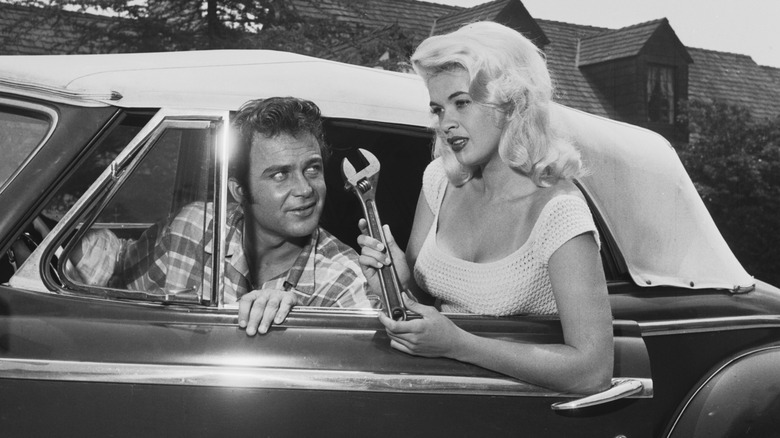Why Do Semi Trucks Have A Bar On The Back?
While driving behind a semi-truck, you've probably noticed a long bar going across the bottom, usually sporting red and white stripes. These are officially called underride guards, which became required by law in 1998 in hopes of preventing fatal car crashes. Underride guards are meant to help block vehicles from sliding underneath the truck trailer in a rear-end collision. Truck trailers don't have bumpers and are 48 inches off the ground, meaning the average sedan is able to wedge underneath in the event of an impact.
Unfortunately, in the early 2010s, the Insurance Institute For Highway Safety, an agency that evaluates the safety of vehicles, including trucks and semi-trucks, found that most underride guards were not preventing fatal crashes — particularly if the driver were to hit the back of the semi-truck partially head-on – since many were not manufactured to be strong enough to withstand even a crash at 35 miles per hour. In 2015, the amount of vehicle occupants killed when crashing into the back of a semi-truck had increased by 39% from 2011 — although they were unable to pinpoint exactly how many fatalities were from underriding specifically. In 2017, the Insurance Institute For Highway Safety awarded five manufacturers for improving on their underride guards as the National Highway Traffic Safety Administration continues to require increased strength and even contemplate the implementation of side guards.
Why are underride guards also called a Mansfield bar?
A more common term for the underride guard is the "Mansfield bar," which was inspired by the unfortunate death of actor Jayne Mansfield in 1967. The Playboy model turned actor was known for her publicity stunts and beauty throughout the 1950s, starring in "The Girl Can't Help It" and "Will Success Spoil Rock Hunter?" While driving to New Orleans with Mansfield, her lawyer, and her three children one early morning, Mansfield's driver didn't notice a semi-truck slowing down in front of them. The driver wasn't able to react in time, and the 1966 Buick Electra collided with the back of the truck's trailer. Due to the car sliding underneath the trailer, Mansfield and the other adults in the car died in brutal fashion.
The horrific accident scared the public as news spread, and soon, truck companies were required to implement an underride guard on semi-trucks. Over the years, the National Highway Traffic Safety Administration has continued to upgrade the recommended strength and construction of the underride guard in hopes of preventing similar fatal accidents. With semi-trucks being all different sizes and cars getting into accidents at various angles, the design of underride guards keeps changing as research progresses.

